Telescopes and Observatories with major UK involvement
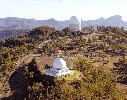
Anglo-Australian Telescope (AAT) - Commissioned in 1974, it was one of the last 4-metre equatorially mounted telescopes to be constructed. Its excellent optics, exceptional mechanical stability and precision computer control make it one of the finest telescopes in the world. Also important to the AAT's success has been its suite of state-of-the-art instrumentation, which is constantly being upgraded and improved.

Atacama Large Millimetre Array (ALMA) - is an international collaboration between Europe (ESO) and North America to build an aperture synthesis 'radio' telescope that will operate at millimetre and submillimeter wavelengths. Japan may also become a partner, making this a truly global collaboration. ALMA will be comprised of some 64 antennas, with baselines extending up to 10 km. It will be located on the high-altitude (5000m) Zona de Chajnantor, east of the village of San Pedro de Atacama in Chile.

European Space Agency (ESA) - provides a focus for Europe’s involvement in space, and promotes the benefits in telecommunications, weather forecasting and space exploration that satellites can supply. It also develops the strategies needed to achieve these benefits, through collaborative projects in space science and technology.

European Southern Observatory (ESO) - is an intergovernmental, European organisation for astronomical research. It has ten member countries. ESO operates two astronomical observatories in Chile and has its headquarters in Garching, near Munich, Germany.
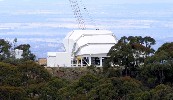
Faulkes Telescopes - are two professional grade robotic telescopes located in Hawaii and Australia. They will be operated remotely from control centres in the UK, Hawaii and Australia, and will be available for 'real time' observing during the school day.
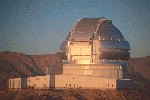
Gemini - is an international collaboration that has built two identical 8 metre telescopes. The telescopes are located at Mauna Kea, Hawaii (Gemini North) and Cerro Pachon in central Chile (Gemini South), and hence provide full coverage of both hemispheres of the sky. Both telescopes incorporate new technologies that allow large, relatively thin mirrors under active control to collect and focus both optical and infrared radiation.
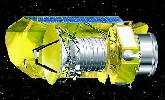
Herschel Space Observatory (formerly known as the Far InfraRed and Submillimetre Telescope (FIRST)) - will perform photometry and spectroscopy in the 60-670 µm wavelength range. It will have a radiatively cooled telescope and carry a science payload complement of three instruments housed inside a superfluid helium cryostat. It will be operated as an observatory for a minimum of three years following launch and transit into an orbit around the Lagrangian point L2 in 2007.

Hubble Space Telescope (HST) - is operated jointly by ESA and NASA. It is a 2.4m telescope in low earth orbit. It is capable of very high resolution imaging and spectroscopy at optical and near infrared wavelengths.

Isaac Newton Group (ING) - operates the 4.2m William Herschel Telescope and the 2.5m Isaac Newton Telescope on behalf of the Particle Physics and Astronomy Research Council (PPARC) of the United Kingdom, the Nederlandse Organisatie voor Wetenschappelijk Onderzoek (NWO) of the Netherlands, and the Instituto de Astrofísica de Canarias (IAC) in Spain. The ING is located at the Roque de Los Muchachos Observatory, La Palma, Spain. The 1.0m Jacobus Kapteyn Telescope was also part of ING.

Isaac Newton Telescope - a 2.5 metre optical telescope, part of the Isaac Newton Group.
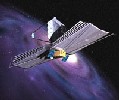
James Webb Space Telescope (formerly known as the Next Generation Space Telescope (NGST)) - will be the next-generation successor to the Hubble Space Telescope. It is due to be launched in 2010. It will carry a primary mirror of at least 6m in diameter and will be equipped with both near and mid-infrared instrumentation.

James Clerk Maxwell Telescope (JCMT) - is the world's largest telescope dedicated to observations in the submillimetre part of the electromagnetic spectrum. It is operated by the Joint Astronomy Centre, on behalf of the UK Particle Physics and Astronomy Research Council, the Netherlands Organisation for Scientific Research, and the Canadian National Research Council.
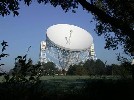
Jodrell Bank Observatory- is home of the Lovell Telescope, a 76m radio telescope. It is also at the heart of the MERLIN array of telescopes which stretches 217km across England and Wales.
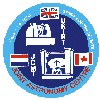
Joint Astronomy Centre (JAC) - provides services and support to enable visiting and staff astronomers to undertake top-quality, front-line, international-class research using the James Clerk Maxwell Telescope and the United Kingdom Infrared Telescope in Hawaii.

Liverpool Telescope - is a 2m fully robotic telescope being constructed at the Observatorio del Roque de los Muchachos, La Palma by Liverpool John Moores University. Some observational time will be dedicated to educational use by UK schools and colleges.

Nordic Optical Telescope - a 2.5 metre optical and infrared telescope located on La Palma and operated by a consortium of Scandinavian organisations.

OverWhelmingly Large Telescope (OWL) - the European Southern Observatory’s concept study for the next generation of ground-based Extremely Large Telescopes (ELT) - a ~100m diameter optical and near-infrared, adaptive telescope.
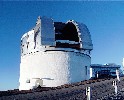
UK InfraRed Telescope (UKIRT) - is the world’s largest telescope dedicated solely to infrared astronomy. It has a 3.8m mirror, and is operated by the Joint Astronomy Centre in Hilo, Hawaii, on behalf of the UK Particle Physics and Astronomy Research Council.

UK Schmidt Telescope - is situated at Siding Spring Observatory (SSO), New South Wales, Australia. During its first 15 years, the UKST was operated by staff of the ROE. Since June 1988, the UKST has been run, together with the 4-m Anglo-Australian Telescope (AAT), as part of the Anglo-Australian Observatory (the UK funding now originating from the Particle Physics and Astronomy Research Council).

Very Large Telescope (VLT) - is located on 2600m high Cerro Paranal, some 130km south of Antofagasta. The VLT consists of four 8.2 metre and several 1.8 metre telescopes. These telescopes can also be used in combination as the VLT interferometer (VLTI). VLT is owned and operated by ESO.
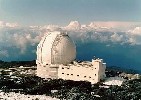
William Herschel Telescope - a 4.2 metre optical telescope, part of the Isaac Newton Group.
